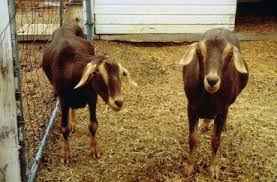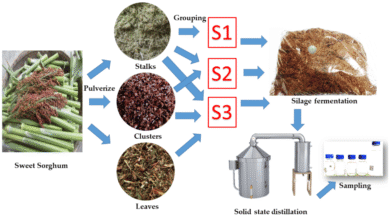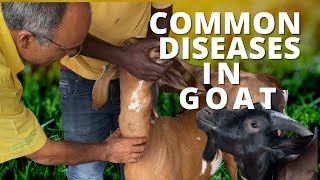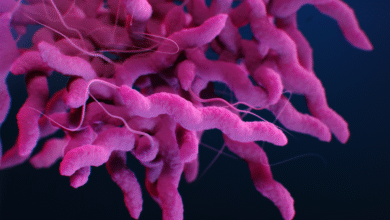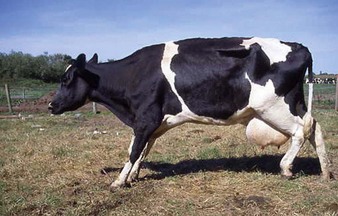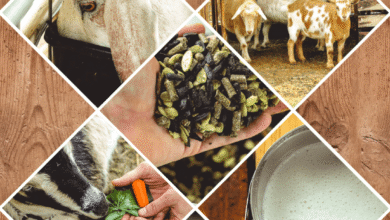
Highlight
- Does prenatally exposed to male littermate conceived at younger ages.
- Does prenatally exposed to male littermate produced larger litters.
- Ewes and does prenatally exposed to male littermate produced male-biased litters.
Abstract
Various prenatal factors including the number of littermates (fraternity size) and exposure to male littermate (fraternity sex ratio) during fetal period have been reported to influence postnatal fertility in the mammals. The present research was conducted to study the association of fraternity size and sex ratio with reproductive performance of nulliparous ewes and does. To this end, data associated with number of littermates, exposure to male littermate, birth weight, age at first pregnancy, as well as litter size, sex ratio of offspring, litter weight, and birth weight of female and male offspring after the first parturition retrieved from the database of sheep (n = 536 Romane and 289 Blanche du Massif Central ewes) and goat (n = 174 Alpine and 267 Saanen does) flocks. Fraternity size was negatively associated with birth weight of ewes and does (P < 0.05). Exposure to male littermate during fetal period was associated with younger age at first pregnancy and larger litter size in the does (P < 0.05), but not in the ewes (P > 0.05).
The concept concerning the effect of prenatal and neonatal factors on health and performance of an individual is called developmental programming or developmental origins of health and disease (DOHaD), and it was firstly propagated by Dr.David Barker. The initial data in this field were more related to cardiovascular and metabolic diseases in humans (Barker, 2004, Padmanabhan et al., 2016), but further studies revealed the importance of developmental processes in production and reproduction of livestock (Bafandeh et al., 2023, Harati et al., 2024, Makiabadi et al., 2023, Mobedi et al., 2024a, Mobedi et al., 2024b). Some of prenatal factors such as maternal age, parity, nutrition and exposure to androgens have also been identified to influence production and reproduction of small ruminants (Kenyon and Blair, 2014, Sartori et al., 2020, Barcellos et al., 2024), and in this regard, most of studies have focused on sheep and limited information on goat is available.
Introduction
Small ruminants are important livestock for provision of food and fiber for human in various regions of the world (Akbarinejad et al., 2014, Wodajo et al., 2020, Anim-Jnr et al., 2023). The sustainability and profitability of production systems of sheep and goat depend on successful reproductive management of the flocks (Luo et al., 2019, Simões et al., 2021). In this context, various methods, including application of appropriate management practices, improvement of nutrition and exploitation of hormonal procedures, have been suggested to enhance reproductive performance in the flocks (Redden and Thorne, 2020, Hull et al., 2023, Roshan et al., 2023). Nonetheless, the reproductive success of an animal is not merely influenced by the aforementioned factors, which affect the animal during adulthood, and prenatal and perinatal factors, which affect the animal during fetal and neonatal periods, can contribute to postnatal reproductive function of an animal.
With respect to developmental programming of reproduction, one of the important factors is fraternity size, which refers to the number of littermate(s) of an animal. In goat, does exposed to male littermate during their own fetal period had shorter productive life but greater milk production (Abecia et al., 2020). By contrast, there are studies indicating no effect of exposure to male littermate on fertility of sheep (Meredith and Kiesling, 1996, Casellas and Caja, 2014) and goat (Mellado et al., 2005). Taken together, it seems that there are some controversies among various studies on the effect of prenatal exposure to male littermate on postnatal reproductive performance of sheep and goat.
Accordingly, we hypothesized that fraternal factors (i.e., fraternity size and sex ratio) can be associated with age at first pregnancy, litter size and weight, and sex ratio of offspring in does and ewes, and the present study was conducted to test this hypothesis. In this regard, we also evaluated the effect of some other prenatal and neonatal factors such as season of conception and birth weight on reproductive variables of sheep and goat.
Animals, study and location
The present research was an observational study and was approved by Animal Ethics Committee at University of Tehran in terms of animal welfare and ethics (30854/6/16). It was conducted at a commercial farm raising sheep located in Kermanshah Province, Iran (latitude: 34.62º N; longitude: 47.40º E; altitude: 1369 m) and a commercial farm raising goat located in Tehran Province, Iran (latitude: 35.38º N; longitude: 51.56º E; altitude: 930 m).
Sheep
Romane dams were lighter at birth than BMC dams (P < 0.0001; Table 1). The dams that had conceived during breeding season were heavier at birth than those that had conceived during non-breeding season (P = 0.044; Table 1). The dams that resulted from singleton pregnancies were heavier at birth than those that resulted from twin and triple pregnancies (P < 0.0001), and the dams that resulted from twin pregnancies were heavier at birth that those that resulted from triple pregnancies (P < 0.0001)
Discussion
The present study was conducted to evaluate the relationship between variables associated with development of ewes and does during fetal period, including number of their littermate(s), their exposure to male littermate, the season of their conception and their weight at birth with their reproductive performance at the first pregnancy. To begin with, the ewes and does that had conceived during breeding season were heavier than their counterparts that conceived during non-breeding season.
Conclusion
In conclusion, the present study accentuated the importance of prenatal factors including seasonal and fraternal factors on postnatal reproductive performance of future generation in sheep and goat. It was also revealed that there were species-specific effects in this regard, particularly with respect to the effect of prenatal exposure to male littermate in goat. Taken together, this study implies that consideration of prenatal environment and developmental factors in management of sheep
Summary
Developmental programming of reproduction in sheep and goats refers to how conditions during early development—particularly during fetal and neonatal stages—can have long-lasting effects on reproductive function and performance. Factors such as maternal nutrition, stress, and endocrine environment during gestation play crucial roles in shaping the reproductive system of the offspring. These early-life influences can affect the development of the hypothalamic-pituitary-gonadal axis, onset of puberty, fertility, and reproductive lifespan. For instance, undernutrition or overnutrition during pregnancy may impair follicular development, alter hormone secretion, and reduce reproductive efficiency in adult animals. Understanding these programming mechanisms is essential for optimizing breeding strategies and improving productivity in small ruminant production systems.
FAQs: Developmental Programming of Reproduction in Sheep and Goats
1. What is developmental programming?
It’s how early life conditions (nutrition, stress, etc.) affect long-term reproductive traits.
2. How does it impact reproduction?
Poor early nutrition or stress can delay puberty, reduce fertility, and affect offspring quality.
3. When is the most critical period?
Gestation and early postnatal life are key windows for reproductive programming.
4. Does maternal nutrition play a role?
Yes. Undernutrition during pregnancy can impair reproductive organ development in offspring.
5. Can the effects be reversed?
Some effects can be reduced with good postnatal care, but prevention is more effective.
6. Are goats and sheep affected similarly?
Generally yes, but goats may be slightly more resilient due to browsing behavior.
7. How can farmers apply this knowledge?
Ensure pregnant and young animals get balanced nutrition and low-stress environments.
Need Veterinary Help?
Have questions about animal health, management, diseases, or treatment?
Our professional veterinary team is here to assist you.
Consult Online: Contact Us
Email: professionaldvm129@gmail.com
Visit: www.veterinaryhub.info

